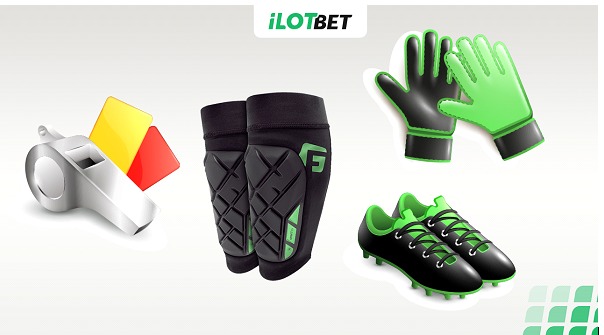When we think of football legends, names like Pele, Maradona, Messi, and Ronaldo spring to mind. But what about the people who never kicked a ball yet changed the beautiful game forever? No, not the coaches or referees, we’re talking about the inventors.
The tinkerers, scientists, and downright geniuses who gave us the tools that make modern football faster, fairer, and a whole lot less painful (literally).
Read Also:Jay-Jay Okocha Returns to Parc des Princes as PSG Defeats Arsenal to Reach Champions League Final
From shin guards to smart balls, this is a tribute to Football’s Forgotten Inventors, the unsung heroes behind the gear, gadgets, and gizmos that have shaped the sport we all love to bet on (yes, we’re looking at you, iLOTBET fan).
1. Shin Guards: A Cricketer’s Legacy
Before shin guards, football was basically a medieval blood sport. Kicks to the shins were more common than corner flags. Players walked off the pitch with bruises the size of match balls. But in 1874, an English cricketer named Sam Weller Widdowson (try saying that after a pint) thought, “Why not strap cricket pads to my legs?”
And just like that, shin guards were born.
At first, everyone laughed at him. Then they saw him walk home without hobbling like a pirate. Soon, shin guards became essential. Today, you can’t step onto the pitch without them, from Sunday league to the Champions League.
2. Goal-Line Technology: The End of “Did It Cross the Line?”
There was a time when football fans feared one man more than the opposition striker: the referee. Especially when the ball clearly crossed the line… but the goal wasn’t given. We’re talking about infamous “ghost goals” like Frank Lampard’s “non-goal” vs. Germany in 2010. Justice? Denied.
That’s where Dr. Paul Hawkins, the brains behind Hawk-Eye, the goal-line technology system came through. Originally used in tennis and cricket, Hawk-Eye was adapted for football and debuted at the 2012 FIFA Club World Cup.
With lightning-fast cameras and software tracking the ball’s every move, the system leaves no doubt: it’s either in or out.
3. Modern Football Boots
Back in the day, football boots were basically bricks with studs. Heavy, stiff, and useless in rain. But Adi Dassler, founder of Adidas, changed all that in the 1950s by introducing interchangeable studs. His boots helped West Germany win the 1954 FIFAWorld Cup. Coincidence? We think not.
Then in the ’90s, along came Craig Johnston, a former Liverpool midfielder. He created the legendary Predator boots, boots with rubber fins that gave players better control, curl, and power. Beckham swore by them. Zidane danced in them. Kids begged their parents for them.
4. The Whistle
It’s hard to imagine a football match without the referee’s whistle. Before its invention, referees used handkerchiefs or shouted to signal fouls. The first pea whistle was invented in 1868 by Joseph Hudson, a tool that ensured clarity and authority on the pitch.
5. The Modern Ball
The modern football feels like magic in motion, but it wasn’t always so smooth. Early footballs were made of leather, stitched by hand, and inflated with animal bladders (yes, you read that right).
Then came Charles Goodyear, the man who developed the first vulcanized rubber football in 1855. It bounced better, lasted longer, and didn’t make players feel like they were heading a rock.
Fast forward to 2014, and Adidas dropped the miCoach Smart Ball, embedded with sensors that could measure power, spin, and trajectory. Basically, your ball turned into a mini coach.
6. Video Assistant Referee (VAR)
We know, we know. VAR gets more hate than a missed penalty in a final. But let’s give credit where it’s due. VAR is the Frankenstein brainchild of countless tech developers and FIFA collaborators, finally tested in live action during the 2017 Confederations Cup.
Whether you love or loathe it, VAR’s aim is simple: fewer bad calls, more fair play. Yes, it takes time. Yes, it still misses things. But compared to the days of wild guesses and “ref blindness,” it’s a digital upgrade that, eventually, gets it right.









